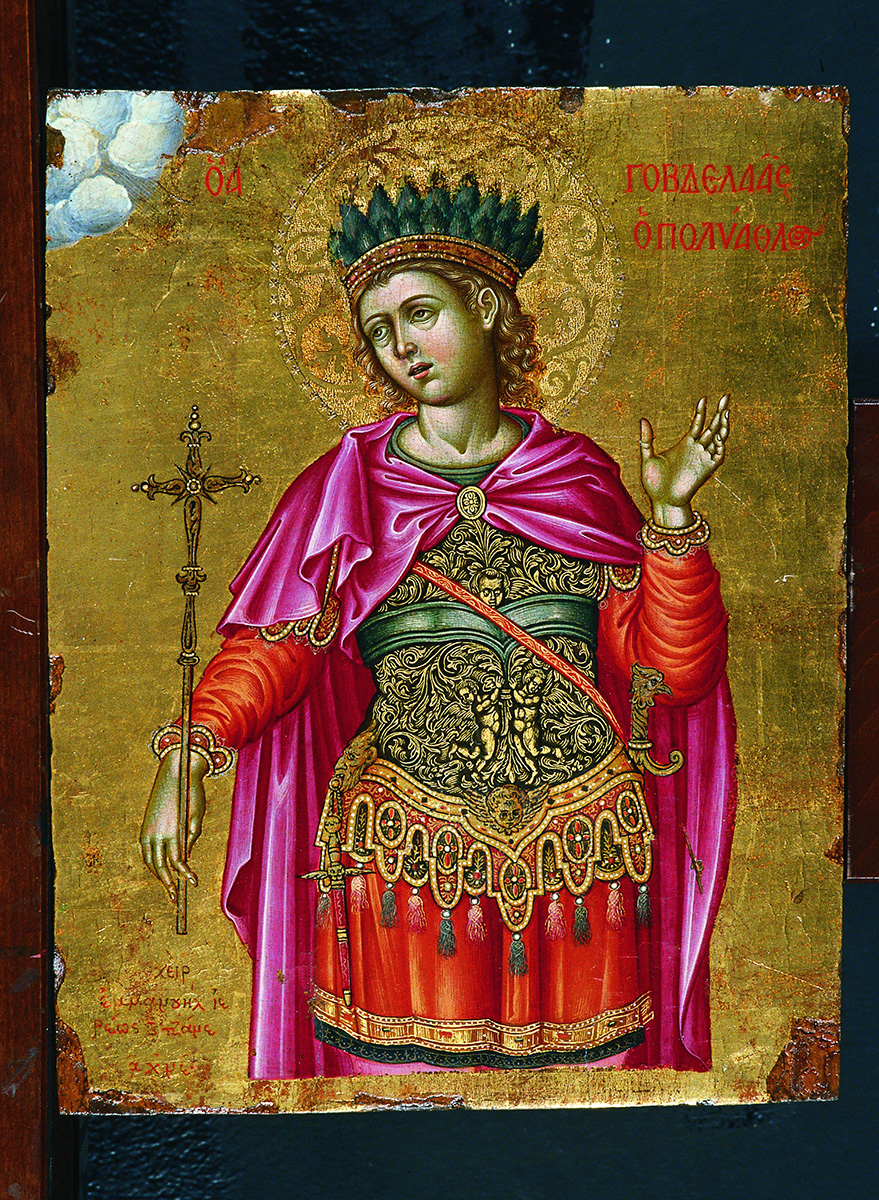
Icon of Saint Govdelaas
Saint Govdelaas is depicted from the thighs up, dressed in military garments and wearing a crown with feathers. In his right hand he holds a cross, symbol of his martyrdom. The Great martyr Govdelaas was the son of the Persian King Shapur II (310-379), under whose order he was put to death for having embraced Christianity. According to the inscription, the icon was painted in 1655 by Emmanuel Tzanes, called Bounialis, a monk and writer of liturgies and ecclesiastic hymns that came from Rethymn, Crete. The reason for creating the icon was the cure of Frangias, brother of Tzanes, who wrote the Service of Govdelaas, which was decorated with a similar design for the honoured Saint and was published in Venice in 1661. The icon has been a model for a series of icons, wall-paintings and engravings. Its painter is considered among the most significant representatives of what is known as Italian-Cretan School.
Code
ΒΕΙ 962
Type
Icon
Chronology
1655
Dimensions
Height 31.2 cm.; width 24.7 cm.; thickness 2 cm.
Material of Construction
Wood; egg tempera
Origin
Donation by the Association of the Friends of the Museum of Byzantine Culture and the families A., P., and E Giannoukou and K. Kalfayan



